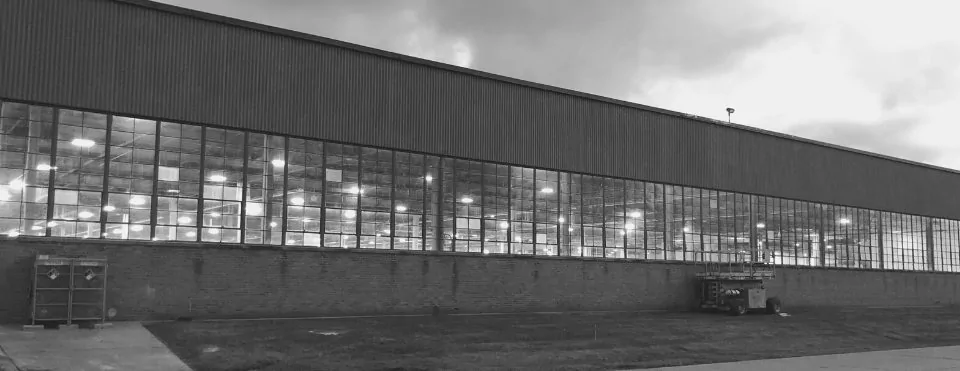Pelican Smart Thermostat Site Manager
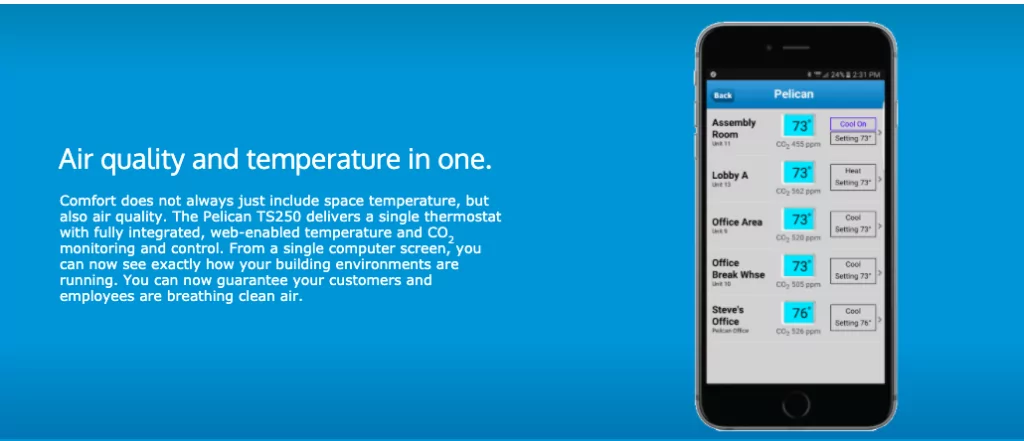
Aug 23 2020
Commercial HVAC equipment is a huge energy user in Chicago – cooling in the summer and heating in the winter. Sensors, controls, and smart thermostats are essential to optimize equipment usage, and the Pelican smart thermostat is by far the most advanced system for small commercial users. While the platform is not as pretty as the Nest, or as universal in application as the Ecobee EMS Smart Building platform – it outperforms both of them in terms of pure data transparency and is really built to focus on the needs of commercial HVAC equipment.
Our company offers three commercial smart thermostat products to our clients, which include Fire Stations, McDonalds, Libraries, and every kind of public and commercial space in between. For some of the applications, the Pelican system can outperform the other systems and makes a great retrofit of an existing rooftop unit that is 5-10 years old. This article will focus on the site manager, which is the online platform for the Pelican system.
The Pelican site manager can work with either the basic thermostats or the touch advanced thermostats, and works best with the PEARL economizer module included for economizer control and Demand Control Ventilation (CO2 driven fresh air to meet code requirements vs always having outside air entering a building). Like most things, the bigger investment to include the PEARL economizer module has more cost included up front, but deeper savings and therefore, deeper available energy efficiency rebates to help offset the cost.
Traditional TS Pelican Thermostat
The Traditional TS thermostat is very common in the commercial world, and we see these in a lot of our customers locations. A very robust, but simple thermostat, that really focuses on the needs of commercial HVAC systems including multiple states of heating and cooling, complex scheduling, and more. However, this thermostat will no longer be produced after March 2024, so the advanced thermostat will be the main product moving forward, and to our understanding, price will not increase on the new product.
Advanced Pelican TS thermostat
The Pelican TS thermostat is a new product from Pelican Wireless Systems that offers a number of benefits over traditional thermostats and it includes a touch screen. Here are some of the key benefits of the Pelican TS thermostat:
- Wireless Mesh Network: The Pelican TS thermostat uses a wireless mesh network to communicate with other Pelican devices, such as sensors and controllers. This means that you can install the thermostat anywhere in your building without having to run wires.
- Easy Installation: The Pelican TS thermostat is very easy to install. It can be installed in minutes without the need for any special tools or skills. There is a workaround to the common c-wire issue that most smart thermostats with a battery face.
- Flexible Scheduling: The Pelican TS thermostat can be programmed to schedule your heating and cooling system to run at different times of the day. This can help you to save energy and money.
- Remote Access: You can control the Pelican TS thermostat from anywhere using the Pelican Connect app. This means that you can adjust the temperature of your home or office even when you are not there.
- Occupancy Detection: The Pelican TS thermostat can use occupancy detection to turn off the heating or cooling system when no one is present. This can help you to save even more energy especially on holidays that may be outside of a schedule.
- CO2 Monitoring: The Pelican TS thermostat can be equipped with a CO2 sensor to monitor the carbon dioxide levels in your building or office. This can help you to improve indoor air quality as well as save a ton on energy when used to meet code requirements.
- Demand Response: The Pelican TS thermostat can be used to participate in demand response programs. This means that you can help to reduce the electrical load on the grid during peak hours.
In our experience of installing this product and focusing on energy saving for our clients, the CO2 monitoring is the strongest part of this system. Instead of having a duct work installed sensor, the CO2 sensor lives within the thermostat, which is often within the space that people will be occupying. As more people enter a space and CO2 rises, the economizer will let in more fresh air to keep that level below a certain level – as opposed to basic code requirements of always allowing some fresh air in, even on the hottest and coldest days.
Most of the descriptions for the site manager below do focus on the advanced thermostat, but the basic thermostat does access this system and has the same basic features, but lacks the economizer control and temperature sensors for the air temperature on return and supply. But, unlike some of the systems that we support – the login and data is free regardless of which system is used. This can lead to a lot of savings over the next ten years, especially for ownership or managers of multiple properties.
Pelican System Economizer Setting
The pelican system has the most robust amount of information, including how an economizer is functioning. I was once told by our local utility that up to 70% of economizers on the market are not working property – so the pelican has the advantage of showing the economizer and its placement. This is because the thermostat can easily be linked to an economizer Pearl module made by Pelican, which controls the thermostat.
As you can see from the below image, I can see the exact economizer setting for the past day in my building. The economizer is set at 0% throughout the day until around 2pm, when the CO2 sensor is detecting a level higher than our setting. This is what we want (keeping the economizer closed as much as possible) because the outside air is hot and humid.
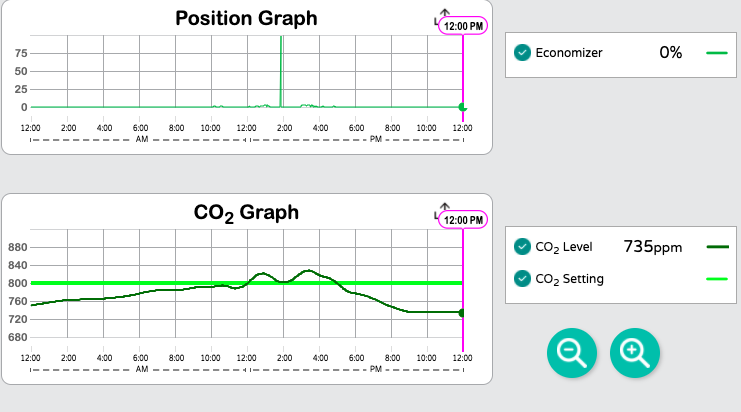
Intake temperature setting
Another feature that is really impressive on the Pelican is that granular data of supply, return and outside air temperature. This is always something that I have wondered and wanted to know with systems of our commercial clients.
The amount of data this shares with a business owner about how their system is working is incredible. Is the system properly cooling? Is the economizer bringing in too much outside air and making it difficult to keep up? Is the programmed settings right for the space?
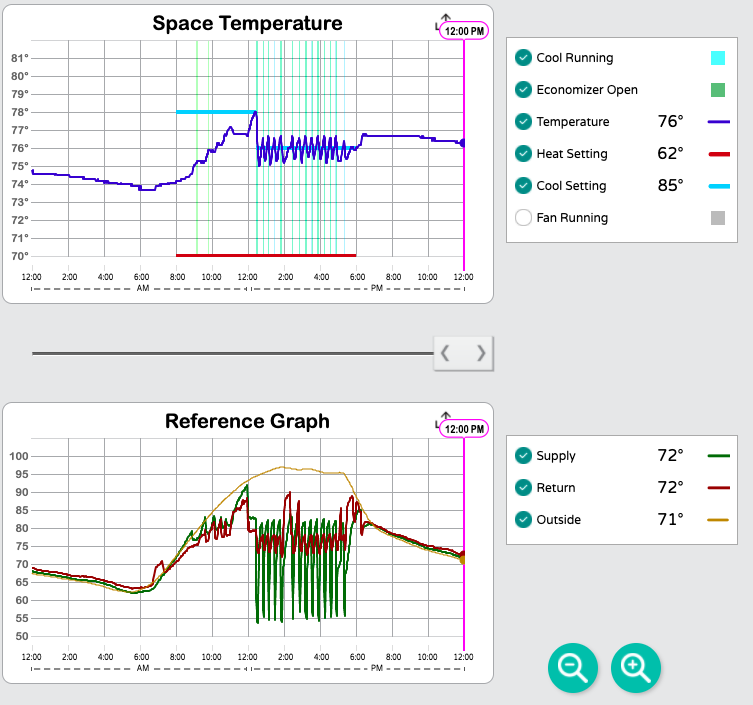
Overall Dashboard
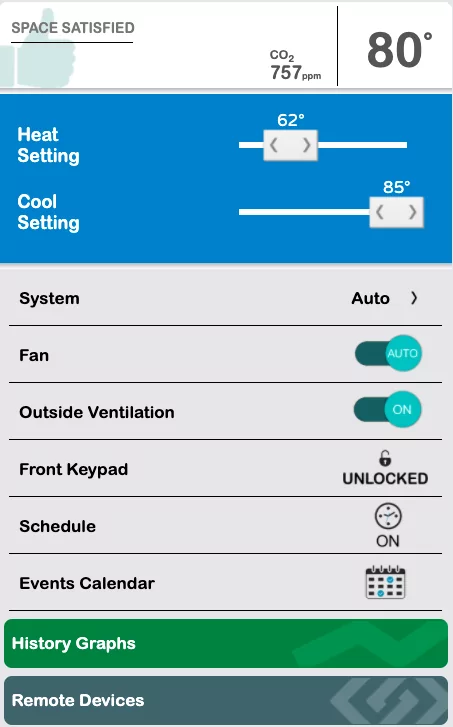
I tend to dig right into the most important part of a system, so I skipped past what most people want to see. The general system is easy to access, and does not cost a monthly fee (a huge advantage over the Ecobee SmartBuildings Platform).
You can link tons of thermostats on the same login, making this great for franchise owners with lots of locations, or business owners with lots of buildings and thermostats.
While there is not an app for this, you can access through a desktop or mobile browser very easily. Not the most impressive from a design standpoint, but the data is great.
Economizer Control
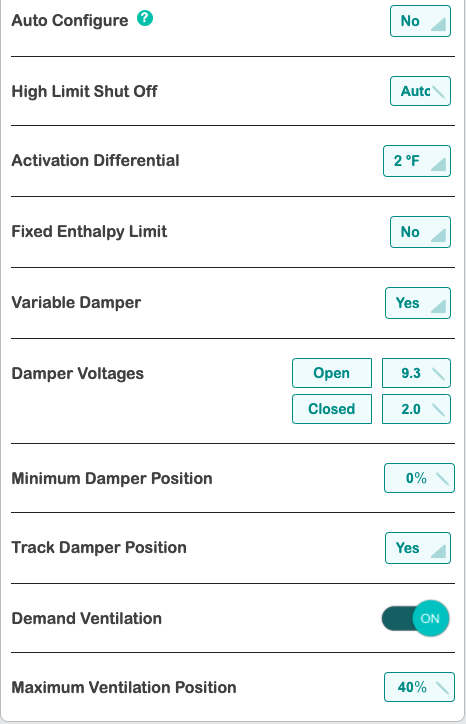
I won’t go into every setting on the admin portal, but it is intense. You can control a lot of things from the dashboard, and in fact, it is better than the control form the RTU.
The economizer is what excites me the most from an energy efficiency perspective. The system allows you to set the minimum setting on the economizer (I have ours set at 0%) and the maximum setting. This will allow fresh air to come in at the amount you control and can visualize -vs the factory setting on your equipment.
Humidity Control
When installing this system in our office, we installed the TS250. This includes the CO2 sensor for demand control ventilation. We did not include the humidity sensor, which comes on the TS250H. I will recommend that to our clients in the future, as there is a lot of value know the humidity point in your space.
The amount of money that can be saved from proper scheduling of a smart thermostat in a commercial building can vary depending on a number of factors, including the size of the building, the climate, the type of business, and the current energy usage patterns. However, studies have shown that smart thermostats can save businesses up to 30% on their heating and cooling costs.
Humidity control is critical in the summer, as higher humidity will lead to lower set points to try and meet comfort for folks. You could have a high humidity room at 70 degrees be less comfortable than a 76 degree room at low or moderate humidities. Modern commercial HVAC systems can meet this lower humidity in a variety of ways, but the main one is using a single compressor instead of both to cool a space faster. So as counter intuitive as it is – running your HVAC system all the time on one compressor instead of half the time on both compressors can actually save a lot of energy. And humidity is bad for so many other reasons in a space, including mold prevention.
How Does Proper Scheduling Save Money in Commercial Spaces?
The best part of the Pelican smart thermostat system is that the basic portal meets the need of 95% of customers, therefore, it is likely to be continuously used and serviced with equipment over time. If a system is not used, the maximization of scheduling is not met for energy savings goals like:
- Occupancy detection: Smart thermostats can use occupancy sensors to turn off the heating or cooling system when no one is in a room or office. This can save a significant amount of energy, especially in buildings that have large spaces that are not always occupied, such as conference rooms or training rooms.
- Setback scheduling: Smart thermostats can be programmed to automatically lower the temperature when the building is unoccupied and raise it again before occupants arrive. This is called setback scheduling. For example, a business could set the temperature to 70 degrees Fahrenheit when the building is unoccupied and then raise it to 72 degrees Fahrenheit before employees arrive in the morning. This simple change can save businesses up to 10% on their heating and cooling costs.
- Demand response: Some smart thermostats can be used to participate in demand response programs. Demand response programs are designed to reduce the electrical load on the grid during peak hours. Smart thermostats can help businesses participate in these programs by automatically adjusting the temperature by a few degrees during peak hours. This can help businesses save money on their utility bills and also help to keep the power grid stable.
In addition to saving energy, smart thermostats can also improve occupant comfort and productivity. This is because smart thermostats can learn the temperature preferences of occupants and then automatically adjust the temperature to maintain a comfortable level. This can help to reduce complaints about the temperature and improve overall employee satisfaction. So the free data and access to the Pelican site manager (or Pelican app) is critical to long term savings in commercial spaces. While it is not perfect for every application, it is ideal for most and even the basic package exceed most customer expectations.
Pelican is Built for Commercial
Many of our customers request a smart thermostat that they have in their home, like the Nest or Ecobee smart thermostat products. But, the truth is that commercial HVAC is very different from a residential system and has different needs. We find the Pelican system to be the premier system of controls for commercial systems, and most reputable HVAC companies are comfortable with servicing these systems, whether you have the basic thermostat system or the advanced PEARL economizer module that controls deeper energy savings.
If you are interested in installing a Pelican system for deeper energy for a commercial space and you are located in Illinois or Wisconsin, please fill out our free energy efficiency assessment form to have someone contact you for a better understanding of your needs.
Featured Posts
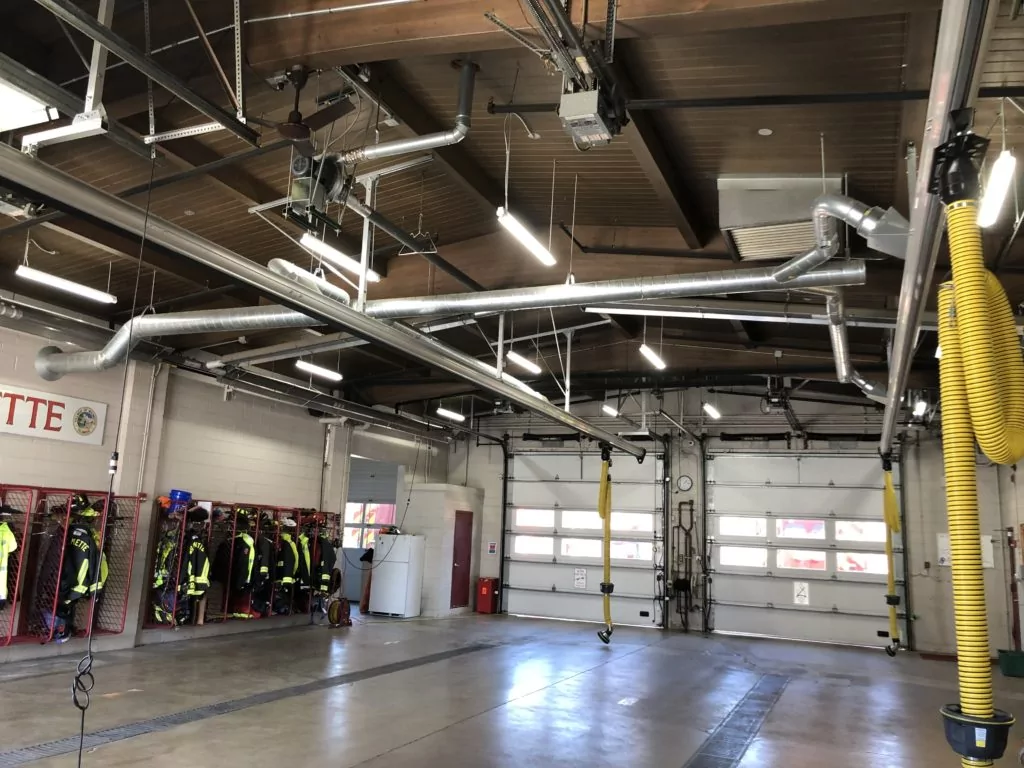
Mar 15 2021
Energy Savings Formula
In 2002, I became a firefighter in the north suburbs of Chicago. I was young and idealistic - loving almost every part of the job. However, I had another secret passion - sustainability. In addition…
Continue Reading >

May 02 2019
Verde Energy Efficiency Experts 10 Most Sustainable Companies in Chicago
In our energy efficiency consulting firm, we constantly look for inspiration from local companies that lead and innovate in clean energy and sustainability. Not all companies have billion dollar budgets, but that doesn’t mean that…
Continue Reading >
Related Articles
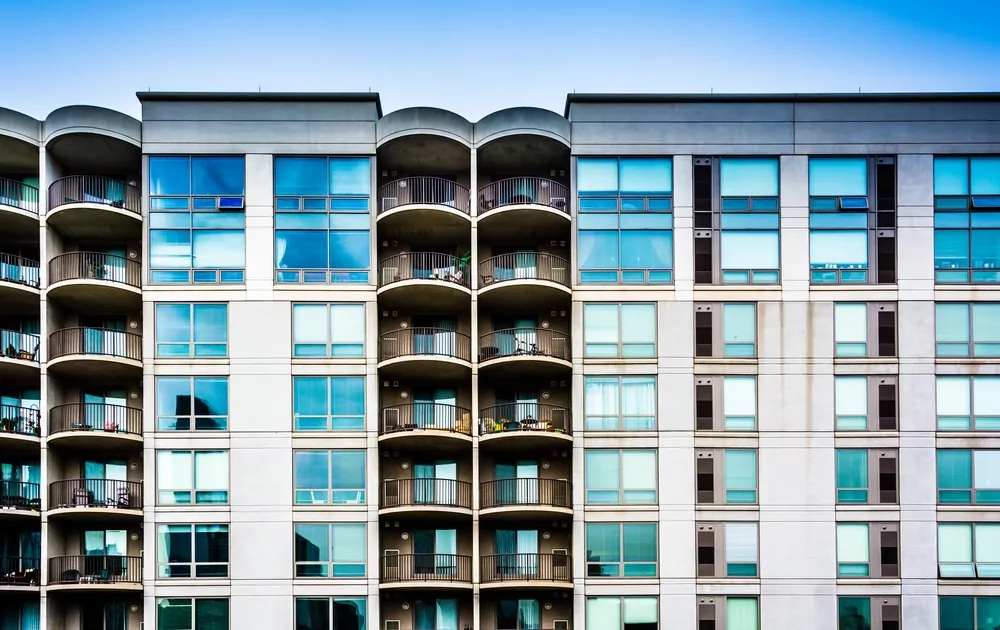
Nov 23 2023
The Impact of Poor Building Energy Controls on Your Bottom Line
The Impact of Poor Building Controls on Your Bottom Line In today's business world, where every dollar counts, it is more important than ever to be mindful of expenses. One often-overlooked area where businesses can…
Continue Reading >
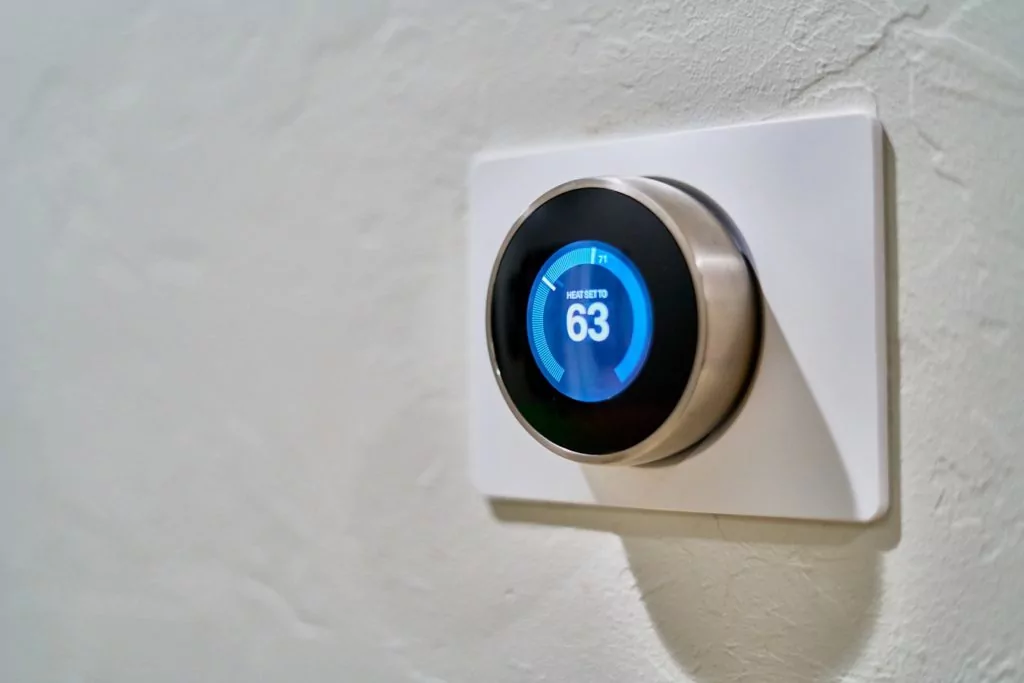
Jun 24 2020
Nest Smart Thermostat Portal
Our company frequently recommends and installs smart thermostats for our commercial and public sector clients. If you are considering or have a Nest Smart Thermostat, this is a good post for you. Smart thermostats are…

